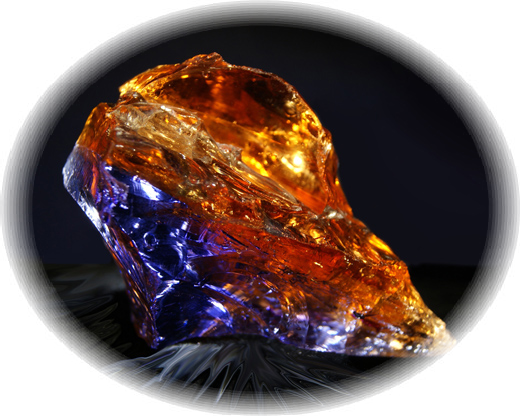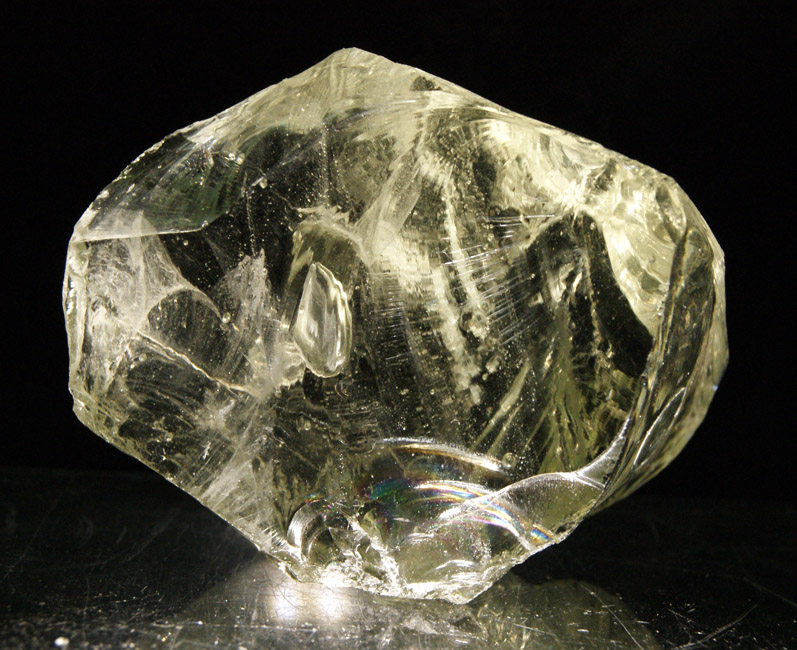Over the years, I have had many people ask if Monatomic Andara crystal is glass. The High Sierra Mountains of northern California Region Andara crystals are not man-made glass. Like Obsidian, the Andara crystals display similar qualities to glass, in the way they fracture and look upon first inspection. But thats where the similarities end.
Monatomic Andara crystals are unlike any natural or manufactured glass found on this planet. In 2003, we hired a sales person, Janet Lawson, a GIA certified Graduate Gemologist. She had never seen or worked with Monatomic Andara crystals before, and was highly intrigued by them. Janet offered to send some to the Gemological Institute of America for testing. We sent several samples to them for analysis. The results were quite illuminating.
The G.I.A. Gem Trade Laboratory has concluded that this specific glass like material does not match up to any of the natural occurring glasses that the laboratory has in its collection of over one thousand samples from around the world.
The Laboratory test findings show that the Monatomic Andara crystal resembles clear to translucent Obsidian, having chonchodial fractures and classic air bubbles. In the test samples provided, striations appear and are like brush strokes, some in iridescent metallic colors. Satellite type inclusions of an ashy substance that have projecting needles were also seen in the samples. Some of the samples had a iridescent metallic coating, a hallmark of monatomics.
The most relevant find from the G.I.A. Gem Trade Laboratory was the detection of “Osmium” through fluorescence analysis. The testing also found the unusual occurrence of “Rare earth trace minerals”. This is the unique signature of Monatomic elements being present.
Monatomic metallic elements have been observed to exist in all the heavy elements in the center of the periodic table. These are the elements which have “half-filled” bands of valence electrons and include the following elements; Ruthenium, Rhodium, Palladium, Silver, Osmium, Iridium, Platinum, and Gold.
David Hudson has put forth a theory that when these elements — normally recognized as metals — exist in the monatomic state, they exhibit super-conductive properties. This means that when electrical currents flow through these elements, there is virtually no impedance to this flow. Without electrical resistance, modern testing technology can not even detect these elements because the instrumentation is fooled by the super-conductivity in the different monatomic metals.
G.I.A. and other laboratories do not have the instrumentation to detect and analyze the exotic properties of monatomic gold and the platinum group metals. Therefore, crystals and minerals containing these elements cannot be classified properly by laboratories.
Based on current testing procedures, monatomic elements have always exhibited the strange property of not being capable of analysis – they have been classified as substances unknown by testing labs. Other tests of monatomics have actually fooled the equipment into thinking that nothing is there at all.
Very specialized and expensive testing equipment is needed to analyze and correctly classify crystals and minerals containing monatomics. Most of the testing equipment available will not correctly identify Andara crystals. Because of their high-spin state monatomics, it takes highly sensitive equipment to even detect them.
The analogy I often use is taking your temperature with a glass of water. By holding a glass of water in your hand for 10 minutes, and the measuring the change in volume, you can get your temperature. It won’t be accurate, and will usually show no change at all. It is just not sensitive enough to give reliable / usable results. Until new economical technology is invented to deal with the high-spin states of monatomics, Andara crystals will continue to intrigue and fascinate, even while the debate goes on.
© Mark Naea, Life’s Treasures Kauai 2008, no reproduction without written consent.


